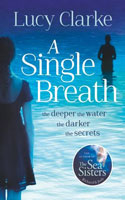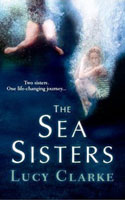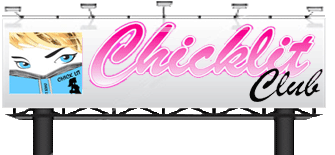INTERVIEW
May 2014

LUCY CLARKE
Lucy Clarke, the author of A Single Breath and The Sea Sisters, has a first-class degree in English Literature. She is married to a professional windsurfer, and they spend their winters travelling and their summers at their home on the south coast of England. (Interview by Jade Craddock)
Return to interview list
Picture credit: James Bowden
-

1. Where did you get the inspiration for A Single Breath?
The idea came from two very separate threads. In 2011, I visited Tasmania for the first time and fell in love with its wild beauty and its remote shacks. Later on that year, I heard of a friend-of-a-friend who was leading a double life in order to hide a huge secret from their family. I was intrigued by the idea of the unknowability of those closest to us, and thought how devastating it would be to find out the truth only when that person had gone. These two threads began to weave together, stitching themselves into the beginning of a story.
-
2. There are a lot of twists and turns in the novel, did these happen as you were writing or were they planned from the start?
I do a lot of planning before I begin writing. I know the key events and main twists that will happen, and how the novel will end – but inevitably, as you write, things change. Many of my favourite twists in A Single Breath presented themselves as I started to inhabit the world of my characters.
-
3. Was there any particular character in the novel that you enjoyed writing the most?
I loved writing Saul. I think he’s a grounded, solitary man, with a deep respect for nature, and has a strong moral compass. If truth be told, I have a bit of a crush on him . . .
-
4. Do you think Jackson is redeemable?
To be honest, I’m not entirely sure. There is so much to like about him – his passion for life, his spontaneity, his exuberance, but ultimately I am rather cut and dry when it comes to the truth, so in my eyes I’m not sure I could find a character entirely redeemable when they have proved themselves untrustworthy.
-
5. The ending is quite open, would you consider picking up the story in the future?
I wouldn’t, no. Whilst I have a strong idea of what happens next for each of the characters, I tend to steer away from tying up all the answers with a neat bow, as I believe it’s preferable for readers to decide those outcomes for themselves.
-
6. What was your favourite part in the evolution of this novel?
I loved exploring the freediving elements and seeing it become an important thread in Saul and Eva’s relationship.
-
7. The book has been described as a marriage thriller, contemporary women’s fiction, how would you describe it and do you think these labels help?
I understand the need to use labels to help position fiction, but sometimes they can seem a little limiting. The idea of a marriage thriller is perhaps fitting in some senses, but the label couldn’t be applied to my previous novel, The Sea Sisters, even though it sits firmly in the same genre as A Single Breath. If I had to pick a label, perhaps I’d broaden it to ‘relationship thriller’ or ‘emotional thriller’.
-
8. Both of your novels have involved foreign settings, how important is travel to your writing?
Very important. I love to take characters and put them in places and situations outside of their typical routines – and see how they react. I’m also a passionate traveller myself, and love the challenge of trying to transport readers to new places that perhaps they’ve never visited.
-
9. You worked as a creative writing workshop leader before becoming a full-time novelist - what encouraged you to make the move?
I worked as a part-time creative writing workshop leader for two years, and after that I ran my own small events business for four years. Working full-time as a novelist was always my main goal, but of course, these things can take time. I squeezed writing around my ‘paid’ work for eight years, and the moment I signed my book deal with HarperCollins, I sold my business and have never looked back.
-
10. What’s life like as a full-time novelist? Describe your average day.
For me, being a full-time novelist is truly the best job in the world. There’s nothing else I’d rather do – and even if I won the lottery tomorrow and could afford to retire, I’d still do it. My average writing day goes a little like this: I’m a morning person, so I set my alarm early and am usually at my desk by 6.30 am. I’m hopeless by evening – it’s as if my creativity fades with the day. I generally write Mondays to Fridays so that I have evenings and weekends free to spend with friends and family who have ‘proper jobs’! Sometimes I write at my desk, other times in the garden, from a beach hut, or in a cafe. I mostly write with music on, but otherwise I don’t tend to like too much noise around me (I bring my headphones for the cafe-writing days). I only have one rule when I’m writing: get outside every day. Fresh air is good for my soul, and great for the imagination.
-
11. How did the success of your debut novel The Sea Sisters change things for you?
I was very fortunate that The Sea Sisters was picked as a Richard and Judy Book Club read, and was also published in ten different countries. It changed things in many ways, and on a purely monetary level it meant I was suddenly able to write full-time, which I am grateful for every single day.
-
12. How easy do you find it to come up with ideas for plots?
I love plotting – it’s one of my favourite parts of writing a novel. I’d say that the initial plot concept usually comes to me (most of the time!) fairly easily. What is trickier is if I’m into the heart of the story and I find a lag in tension or pace – then it’s up to me to try and find a way to resolve it. Much banging-of-head-against-desk can ensue at that point!
-
13. What authors have inspired you in your journey to be a writer?
Two writers immediately stand out. Firstly, Maggie O’Farrell for the sheer vividness of her imagery, the effortless way she depicts character, and her ability to make me feel an entire spectrum of emotions with each story: love, empathy, fear, loss, laughter. Secondly, Tim Winton, who has taught me about the language of landscape. His novels describe the landscapes and seascapes of Australia with such rugged clarity and passion that I turn the pages, jaw agape.
-
14. Are you working on anything at the moment?
Yes, I’m currently writing my third novel – and loving every moment of it! The working title is The Blue, and the novel is set on a yacht sailing towards the South Pacific, crewed by a group of travellers. Best friends Lana and Kitty join the yacht in the Philippines and sail through crystal clear lagoons, and remote, uninhabited islands. But, on a 10-day ocean crossing, the crew wake to discover one of their friends is missing – and no one claims to have seen anything. Disturbed by the disappearance, relationships between the crew begin to fracture, and Lana and Kitty’s friendship is stretched to breaking point. It’s a story of friendship, hedonism, and the delicate balance between truth and lies.

